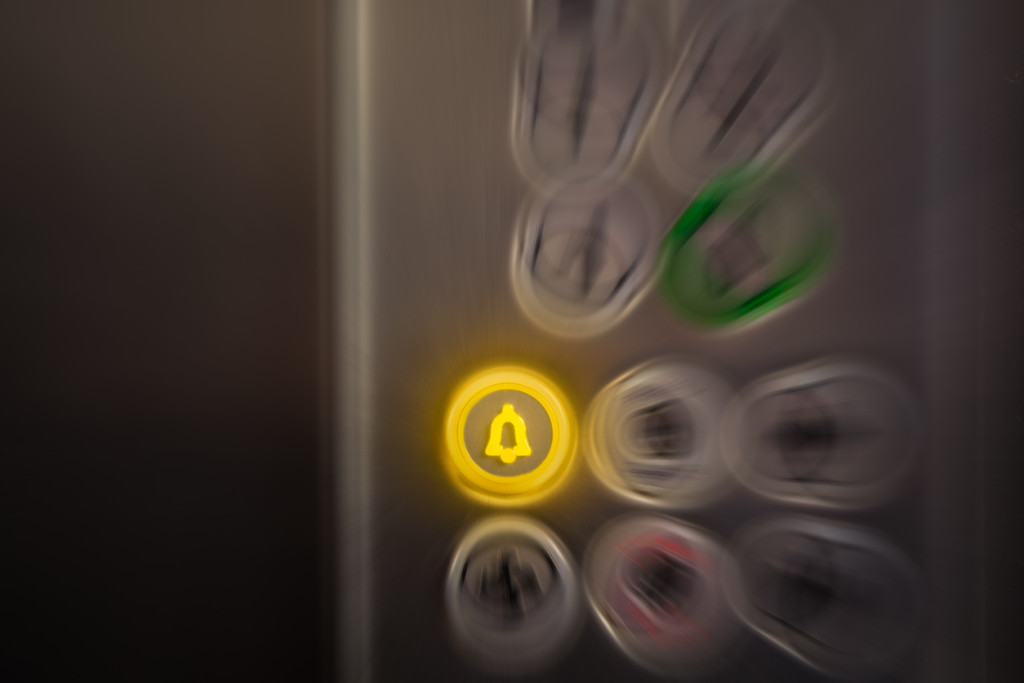
6 Simple Steps if You’re Stalled in an Elevator
How to stay calm and ride out the wait
Even the least claustrophobic among us may admit to a faint sensation of relief when the elevator doors open at our destination. Over 325 million of us travel via elevator every day in North America, with elevators and escalators moving more people safely than any other form of transportation per trip.
Still, the possibility of a stalled elevator is a worry for a great many people. It’s for this reason that we used the word “stalled” instead of “trapped” because in reality, you’re far from trapped in this temporary situation. There are a host of ways to deal with this uncommon event and remain cool until help arrives.
Know the fail safes of basic elevator construction
You may be pleasantly surprised to learn just how safe elevators are. Traction elevators are connected to between two and eight steel cables, so if one fails there is always a back-up. There are also braking mechanisms on the elevator’s rails which are designed to slow the car down in the event of too quick a descent. Emergency lighting will activate in the event of a power failure but failing this, the light of a cell phone will suffice to illuminate the control panel in front of you.
Push the right buttons
If you’ve stalled, repeat pressing the button for your desired floor or another which is lower. If this doesn’t work, try the “Door Open” button. You should not attempt to force the doors to open. Be patient with the button and give it more than one chance to respond.
Depending on the date of the elevator’s construction, you will have either a telephone or an alarm button clearly labelled in your car. These options connect you to professional assistance who will take immediate action to get things moving again. Some receivers are only set-up to receive calls so don’t be discouraged in that event; simply report the situation.
Of course, one great modern benefit is the cell phone. If you feel there’s a problem with the in-car communications, remember to use your cell to call someone in the building or to alert rescue services. Another factor in a stalled elevator is boredom, so be sure to utilize your phone’s multimedia capability to keep yourself amused.
You won’t suffocate, so breathe deeply
Any sensation of panic will cause a shortness of breath but don’t be misled into thinking you’re running out of air. Elevators are ventilated near the floor or ceiling and there is always plenty of air circulating in the very large space of the elevator shaft itself.
Don’t worry about the weight
How much weight an elevator can carry varies based on its size. An average adult weighs 195 lbs. and elevators can carry loads of between 1000-6000 lbs: that’s around five adults at the lower end and thirty at the upper. Don’t forget the power of the elevator’s many cables, any one of which could safely manage the weight of a fully loaded car.
Never attempt to leave the elevator
No matter how tempting it may be to escape the confines of an elevator, you must never do anything other than call and wait for help. Should you slip in the shaft, there is nothing between you and a clear fall to the ground. If the elevator should regain motion (regardless of speed) you may lose balance.
As a preventative safety measure, many elevator hatches are secured to prevent them being opened from the inside. Should you find one in that state, remember not to feel trapped; it’s to stop any possible harm befalling you or other passengers.
Prepare yourself psychologically
We left the most important step until last: don’t panic. This may be easier said than done for those who are a little claustrophobic or apprehensive about elevator failure and suddenly find themselves in a tight spot. However, a little time spent in advance reviewing the facts can promote a healthy awareness of positive action. Running a safety drill in your head now will prepare you for any elevator issues you might encounter.
If you or someone you know is anxious about elevator safety you can review this very helpful resource designed to educate adults and kids on the subject via interactive programs (they also promote elevator awareness during the second full week of November). You can also review the website of the National Elevator Industry to learn more about the high standards required to operate elevators anywhere in the country.
If you’re responsible for maintaining elevators, Connections Elevator knows how important urgency and reliability are to your building. You can reach us at (954) 792-1234, email at info@connectionselevator.com or take advantage of a complimentary consultation via our contact form.